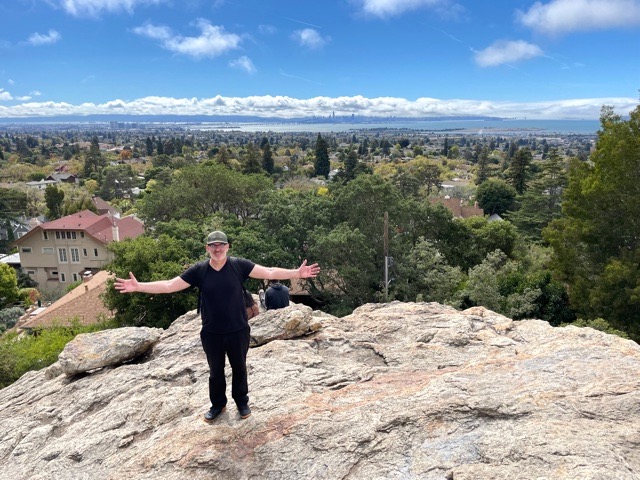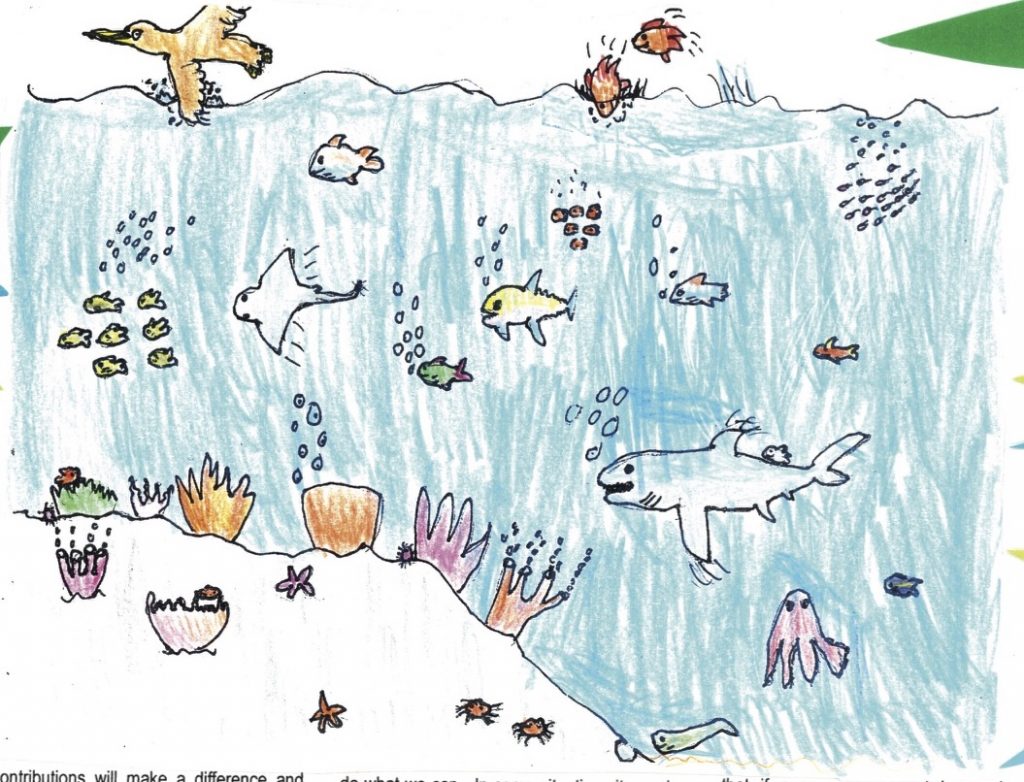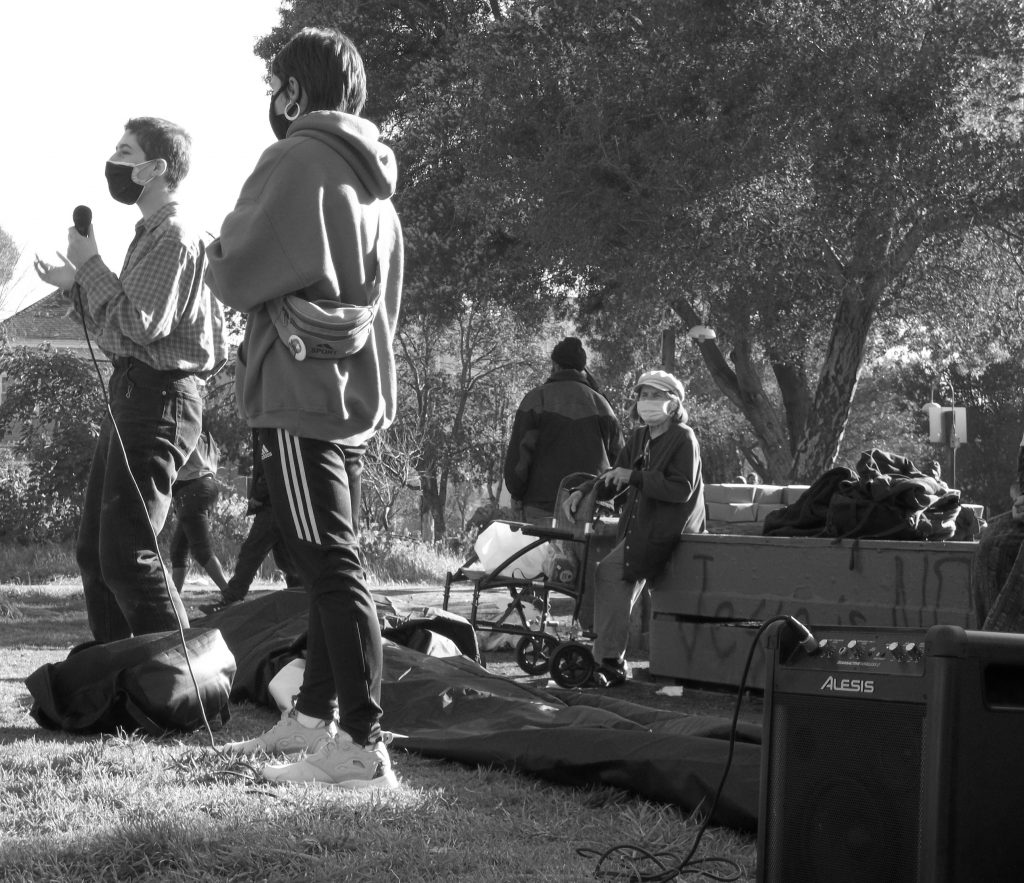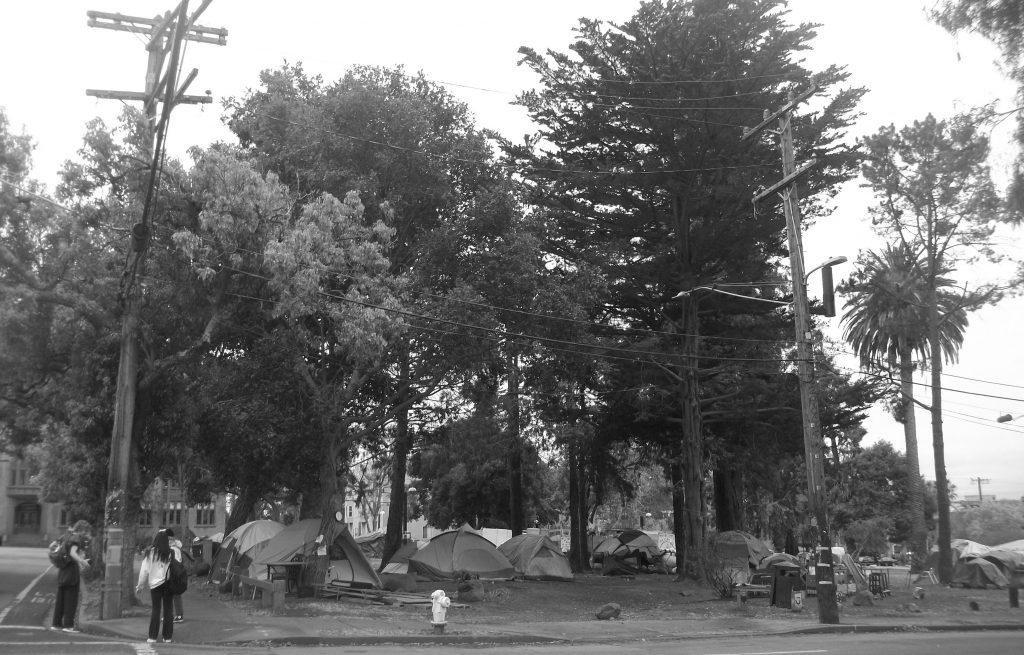How did we end up having a page regularly dedicated to an archaic way of communicating? Well, in some ways Slingshot started off as a zine. These are a sample of the things you can read at our space Long Haul. Get us while we’re hot. Otherwise you can reach out to these publishers and get a copy sent to your squat. For best results make your own publication and send it in for trade. I’m pretty sure we would like to carry a copy at Long Haul as well.
Turning the Tide January-March 2021
$20 per year – 4 issues
PO Box 1055
Culver City, CA 90232
The articles in this 30-year old quarterly are a mixed bag of academic writings, news, and a little history. Despite the mixed quality of the reprinted material, the hard news here is rock solid, making it a worthwhile read. The cover article, written by Mumia Abu-Jamal, is a poetic reflection from December regarding the literal and metaphorical coldness of death row. It comes paired with a more dense piece by Dave Lindorff from Counterpunch.org with a synopsis of Mumia’s most recent appeals. The article on conditions at a Connecticut Women’s Prison was short but even more powerful. The piece on Assange is also reprinted from Counterpunch.org but we can forgive this, as the paper is distributed free to more than a thousand prisoners, who generally lack access to this material.
The Spring issue feature is ‘United Snakkkes in Africa’. It revisits history over 2-full newsprint pages to explain the persistent problem of making the U.S.A. adhere to treaties. It’s not an academic debate. The president of Ghana, Akufo-Addo is allowing the US to operate a military base within its borders, and simultaneously making a semantic argument that he isn’t. The abstract will be enough for some, but quoting 1960s Al Wilson lyrics warrant a deeper dive.
‘Trump’s Big Lie’ was a genuinely strong analysis written before the attempted putsch and with great foresight. But the article ‘Was 9/11 An Inside Job?’ kind of drags down the mood in the room. I appreciate that Turning the Tide has the chutzpah to publish a rebuttal article, but a full page on this tired conspiracy is overmuch. Like Sasquatch and trickle-down economics, that mythology has had more than enough airtime. The Betteridge law applies here: Any headline that ends in a question mark can be answered by the word “No.”
(Jose Fritz)
Razorcake February-March 2021
$23 per year – 6 issues
PO Box 42129
Los Angeles, CA 90042
It’s a beautiful thing when an utterly obscure indie rock band from Minneapolis lands on the glossy cover of a magazine. As a writer, it makes you feel like all things are possible: that art can elevate the artist, acceptance can cure broken hearts, that wars can end and that even exiled poets can, one day, return to their homelands. But it’s exactly the kind of hopefulness we’ve all come to expect from Razorcake.
The columnists this time around cover buying LPs on Discogs, writing autobiographical suicide novels, and the struggle to achieve normalcy in sex work. These writers are peeling off their skin and pointing out the holes inside. To quote Lorde Jayne “Sometimes accepting that you are worth something is fucking hard… Love hurts not because of the possibility of being rejected, but because of the mindfuck that is unconditional acceptance.”
There is this vague idea that punk rock is about freedom of expression and personal autonomy and that the validity of art is inherent in its creation and not contingent on its acceptance by any broader consumer audience. To that I say— amen brothers and sisters. Twenty years ago they dedicated themselves to DIY Punk, and to unheard voices. Then they double down with over 20 pages of record reviews. Will the cover of Razorcake propel your band to superstardom —the land of good blow, leather pants and self-indulgence? No. But that’s never been the idea.
The writing here is often insightful, relevant, and sometimes even existential. But I gravitate more toward the visceral moments: like when Angus Wonder Of It All describes an incident on stage in ‘One Punk’s Guide to Sludge Metal’ with the Maileresque phrase “No reverberberberberberb …turnnn offff the fuckingggg reverberberberberberb…”
(Jose Fritz)
Fifth Estate Fall 2020
$15 per year – 4 issues
PO Box 201016
Ferndale, MI 48220
Published political writing always strikes me as implicitly hopeful. Hope is a complicated human phenomenon. The hopeful all believe that that the human capacity for change is real and that their cause is just and can prevail. So where cynics and misanthropes alternately see anger and disappointment, Fifth Estate beams a gritty brand of optimism by virtue of merely existing.
By extension, Rui Preti and Stephen Cline don’t examine Minneapolis street protests for purely detached academic reasons. This is live from the trenches. They’re advocating for meaningful reforms. [Cline for his part writes like a poet, which is apropos as he also co-edits the very artful journal Peculiar Mormyrid.]
Frank Joyce explores The 1619 Project. Bruce Trigg discusses the success and failure of the U.S. public health system in its mixed Covid-19 response. Fran Shor hits the same topic in great depth, drawing strength in the metaphors from the book The Plague by Albert Camus. While they all condemn institutional failures, they praise civic solidarity in equal measure. Shor wasn’t alone in realizing the parallels there, but he had a more didactic and constructive vision than Vox and the Boston Review. Bill Weinberg’s ‘Two Faces of Fascism’ was just potent and insightful. You can lose a whole afternoon reading this way.
But by comparison, derisive anti-civ articles like Steve Kirk’s ‘Life and Rewilding in the Pandemic’ strike a dissonant chord. Hyperbole is inherently ironic and therefore cynical. However unpleasant cubicles may be, referring to them as “foam-insulated death-boxes of efficiency” are difficult to take seriously.
The emotional value of celebrating civil disobedience, or an alternative lifestyle is very different from wallowing in being disaffected and/or marginalized. Sure, obstacles and opposition are very real, and so is the sense of loss. But the other side of the equation is far more potent in effecting change. Fifth Estate is at its very best when it plays to that strength. On a good day it’s a testament to hope, resistance, and humanity. Thank you for coming to my TED talk.
(Jose Fritz)
New Wave Chicken #9 – $4
PO Box 880081
Pukalani, HI 96788
I do remember the 80s. But now, decades later, the images now seem dim; like that single yellow bulb on the bathroom ceiling at CBGBs. Next door there used to be an art gallery, CB’s 313 Gallery. There it was, art and punk side by side at 313 and 315 Bowery. Yes, I was there, and I met Joey Ramone too, but it was a long time ago, and despite that, what I remember most are Hammer pants and Max Headroom.
Steve Hart remembers the 1980s with an insight and a gravitas that I do not. Where other zinesters recall kitschy toys, and Saturday morning cartoons, Hart drags out the punk and hardcore flyers from a milk crate in the basement. It’s a bit incongruous with his modern life as a Hawaiian chicken farmer; but so be it. It’s his own life narrative that connects all the stories. To that extent New Wave Chicken might technically be called a perzine.
We all have our strong suits. Not every painter is a writer and vice versa. But still, an artist’s perspective on their own work is usually interesting. Both Michael Banks and Michael Peoples commented on the self-expressive purpose of art in general. Peoples displayed an amazing level of self-awareness, spelling out that he felt “…artists in the social justice genre are saying more in the moment than my own work.” Travis D. Simmons waxed philosophical and talked shop about mixed media and materials. (As you might expect, he turned out to be a Skinny Puppy fan.) Still there were some duds. Hudley Flipside shared some less than notable poetry.
The best pieces here are the interviews that dig into the connection between music and visual art. Al Garr, Ross Sewage, and Mark Ottens each spoke at length on the bands that inspire them and the art they made for those bands. Ottens stands out even among that lot; an artist, writer and musician. A man with tales of cancer, boys with rabies in Bangladesh, the bird of paradise, and the strangely universal experience of listening to punk cassettes in a car, with the windows down, in a Grand Rapids Walgreens parking lot.
So what’s the answer? What drives these artists to create art? Is the urge to create just innate, like breathing,? Mark Otten came the closest to answering it. He said “Perhaps we end up doing what we do because of all the things we cannot do… We have to do something, and maybe then, I do just what I can.”
(Jose Fritz)
Razorcake
Issue 123, August/September 2021
$23 per year – 6 issues
PO Box 42129
Los Angeles, CA 90042
This month Razorcake has the Mummies proudly on the cover. You probably first head of the Mummies from their Shitsville 7-Inch in 1990, or that Fuck the Mummiesbootleg in 1991. Perhaps, it’s that image on the cover of Never been Caught of 4 men wrapped head to toe in rags with the drummer and bassist atop a 1963 Bonneville Ambulance with the band name emblazoned along the side door. They never suffered from an excess of subtlety. It’s inevitable that some people will first encounter The Mummies that time they were on the cover of Razorcake way back in the Summer of 2021. Garage rock has been with us for over 50 years but the good stuff never dies. It just gets wrapped in rags to shamble across the stage with a couple cheap Fender guitars and a rented 50 watt PA.
The pinnacle of the issue is a picture of Karoline and Robert Collins posed like Grant Wood’s American Gothic painting. Instead of symbolizing rural austerity, they both wear black face masks, and Karoline is in a “Hell is Here” T-shirt. They stand in Wonder Valley, in the Mojave desert. The mood is post-apocalyptic. You know her by her legendary photography. But her first words in the interview are “I like to shoot people.”
The interviews in this issue were really strong. Jon Moritsugu and Amy Davis show us how to build an indie film career with a $300 camcorder. Then we have 5 pages of Q& A with Milky Wimpshake, who turn out to be collectively pretty quotable. But it’s Pete that goes straight for the cults and politics. Ironically, it was the young ingenue Emily Timm who had the more insightful comments on ageism. The piece dovetails nicely with the Sized Up interview, an exchange wholly predicated on the 40+ contingent having the enduring ability to perform and tour like they are still young and immortal.
As you may have noticed, the ontology of the gracefully aging punk has become a running theme in Razorcake. They tread carefully on the topic, avoiding any mawkish preening or overt pandering. I find their expeditions into punk nostalgia simultaneously ironic and engaging. But I may be biased; I resemble that remark.
(Jose Fritz)
No Touching $4
antiquatedfuture.com
I think I don’t like poetry. The Slingshot collective has a lame policy of not liking poetry. But for different reasons. I find it hard to invest in re-reading books and shit. Re-reading is the secret sauce to unraveling delight and awe from poetry. My problem is I’m this consuming machine — always going forward. But perhaps if I lived in Slab City or some place more sparse on info and stimuli I could invest the time needed to appreciate the art form. Thankfully this zine is very brief so in some ways it’s like a Zen koan or a set from a rockin’ band that is on stage just long enough to make you want more. Also the unusual shape makes it stand out. One of the three pieces here is heavy with grief. Oh man no wonder why poetry is hard to read. Proceeds of this goes to the Berkeley Free Clinic. When people go there to check for STDs they should be given a copy of No Touching. OK Bad Joke.
(eggplant)
Node Pajomo # 2.6
Attn: Box Holder
PO Box 2632
Bellingham, WA 98227-2632
Most people will pick this up and be pretty confused. 36 pages filled only with reviews of things with funny names. Well some of the pages of text are interrupted by old photos captioned with bits of dadaistic writing. Total confusion. This is a functional document for a particular segment of freakiness. It’s a directory of outsider art, underground pamphleteers, zines, tape traders, mail art. It’s where you go when you got some stamps and a desire to see something unusual come to your address.
It’s a one-man operation here. We don’t know who it is but they sign off as “PJM”. And the guy is losing steam. For good reason. It’s an exhaustive effort. Every item is given consideration. Even if the music makes his ears ring or if the zine written in French just passes through his eyes and skips his brain. Passages from this issue skipped my brain a few times and I had to reread some parts. It got better the 2nd time.
If I could suggest to the editor two ways to entice people more: one would be to reprint the covers or some piece of notable artwork from these items. You know, the whole show not tell. I have often read a review of something in other zines then looked at the cover they reprinted and wanted to read about the thing. The other thing to do is more ambitious. Every issue he could stretch out a review or general write-up, highlighting who makes a thing and where it’s from. A short interview, a still life drawing of the author, etc. Whet our interests even more of these outsiders, and what they make.
(eggplant)
Papercore #5
c/o CIRA
50 rue Consolat
13001 Marseille France
It’s worth being excited to see a new issue. It has a punk edge. Consistent. Large format so lots of space. The cover is always silk screened, this time with 3 colors. Always seems to be international. This one has voices from Burma, Spain, France & England — probably more. All written in English. Some of it is translated so goofy words & sentences surface at times. The zine is open to contributors but not to being reprinted on the internet. The fighting spirit put on paper that’s worth upholding.
I found this issue disappointing though. It starts with a lashing of a punk scene celebrity for being abusive, then you get a report on bands playing around France with everything just listed off with no illumination of what their sounds evoke or who is moved by it. Then questions to punks in Burma of what its like being punk under military oppression, and then perspectives of a sketch artist filling up time during social distancing lockdown. Vegan recipes and zine reviews wrap up the last pages. Nothing outstanding this time but…maybe you have something for it next issue. The writing this time around made me think that its by people who came to punk from some pre-fabricated place. It didn’t come across wild. Free. It’s been awhile since zines and newsspapers were made by such people. Those people are usually out getting into trouble to bother with the hardships that come with projects like this. I’m still eager to see the next issue.
(eggplant)
Nevermore! V. 1 March 2021
nevermorezine@riseup.net
What does it mean…anarchism? It’s one of the great boogeymen of the modern era. Reviled by the Trump regime and those who wish to protect the statues of the war state. There must be something about anarchist thought or action that is really really dangerous. Well, you won’t find it in this issue. No, the purpose of the 28 pages here is in contemplating Covid 19 and how governments worldwide use similar measures to curtail our freedom in the name of the dreaded virus. There is a lot of opposition here to lockdowns, social distancing, surveillance and screen time. There’s also plenty of energy eviscerating governments but very little in the way of figuring what the world will look like without them or how to get there. An age old problem, but given the latest untenable crisis everyone is up against, pretty essential.
The eleven articles are mixed in quality. Made up of international communiques (Chile, Canada, Greece, USA) so at least two of them have the excuse of being translated into English. In many spots, the writing is generic radical jargon. Be prepared to labor through fistwaving at “technocrats,’ “corporate executives,” “bureaucrats,” the media and sold-out scientists. It’s the language of alienation. There’s one argument questioning scientists and some study. If this makes you yawn like it does me, hang in there — at times there is some good ideas. Like simple observations how fear and shame are ruling the day in everyone’s obedience to power.
Most of the writing doesn’t have a name attached to it, what is referred to with the phrase “by-line”. Maybe not a problem for some readers…but man, that one article completely written in the first person; GET OUT OF MY HEAD WILL YOU
The first person form of writing isn’t so great, especially when an article dwells on ideas that are disagreeable or badly organized. Having no one attached to a piece of writing really conveys that no one is in fact writing it. Isn’t there some AI program that ghost writes anarchist rants by now? Having a name to a piece of writing gives some sense of where it is coming from in much the same way when publications puts a date and address to their work. Perhaps by subverting this, it is an attempt to seem universal. The whole thing feels like it came from the universe. Man.
The other wasted space here is two pieces of what some people would call poems. One resembles a series of slogans and the other resembles the time that crazy person unloaded their anxiety by ranting at me nonstop. Not the poetry of symbols and decorated communication, of meaning that can reach people across time and country and compel them into contemplation. Here is the poetry of a busted ass cafe open mic.
That’s the worst of it. Some people will eat it up. Those who hunger for Crimethinc-like grand statements into vagueness, the quasi academic flag burning and killing of inner cops, the sort of anonymous zines you see at the free table at the fringes of fringe book fairs will be at home here. And hey!! it looks good. The pages are large with ample room for big words that you don’t have to squint to read. Its tastefully balanced with lots of graphics– some of which are original and in full color. Oh yeah, it’s glossy. Full-color Glossy. So kinda like a museum catalog more than the work made from a speed-freak pirating copies from a corporation xerox machine. If they keep the presentation up and their fight-the-system thrust….and maybe work on the writing and ideas some…this may become essential reading.
The March issue arrived right when Slingshot and the rest of the Bay Area entered into the vaccination phase of the pandemic. A complete shift went across the land at this time, taking us from house arrest to curtailed freedoms. This publication was immediately hard to read for it spoke of a world people were trying quick to forget. The No Hugs Goodbye, No Bars or Sport Events World. People having to cut their own fucking hair or have their fucking kids sleep in on a Monday. That world was expected to go away with the Orange Menace. But this folly is what comes with doing print projects in the age of constant instant news. It’s old before you write it.
Another failed aspect is how it fails to peer into the paradox of the pandemic. Dare I say it….shit like how in 2019 wearing a mask at protests was edging closer to being an act of terror…then after the great world-wide lockdown…and still to this day…it’s the norm for normies to mask up at protests — or otherwise. And I think they’re starting to like it. Could it be that common people are coming closer to anarchist practices? That’s why this review opens with asking “what is anarchism?” Is it just disguising your face from cops, Proud Boys and the Whole Foods theft management? Is it graffiti? Is it free mass transit? Is it publishing something only a dozen people can understand?
How are we just repeating what somebody else said was the way to go?
Does this anarchism that we are celebrating transgress outside the borders of its cage in Wikipedia? The subtitle of Nevermore! is it’s a “Journal of Heresy and Thoughtcrime.” This issue didn’t have much of either. But if we keep watching it, perhaps we will be outraged out of inaction by their pages to come.
(eggplant)
Shades of Glass In Your Eye #16 $3
PO Box 7831 Beverly Hills, CA. 90212
A couple decades ago, a Midwest absurdist moved to Los Angeles and started this zine, blending journal-like observations, jokes and activities. She throws everything at the wall, endeavoring to delight readers and cause a giggle. A lot of it is quite silly given its highlight here in an activist paper. But as the man says, “Warriors….Come out and play-yay!”
(eggplant)
Taco Rat #1
po box 790728
San Antonio, TX 78279
TacoRatSAtX@gmail.com
In my day when the world was going to hell and everyone in power was corrupt we would turn to weird art. Appreciate it or make it. This is in that tradition. From San Antonio Texas which apparently is a land of tacos. Friends of mine say we should boycott everything from thsi place given the rabid Republican agenda coming form there. Well Taco Rat has none of that shit instead there are pages dedicated to a public sculptor artist, music, underground movie makers and the ancient history of cable TV.
A good balance of words and art, computer graphics and hand made images all of done in classic cut & paste technique. Its hard to tell if more issues of this will come out. It’s maker Mike Scholarry is also running a record label, constantly making music and probing the wasteland. I’m surprised he has time to read the books or watch the movies he reviews here. I think the 20th Century phrase is that Mike is firing on all cylinders. The door is open for to jump on his ride…though you will likely end up on a musical collaboration with Mike and have your blood sweat and tears saluted in the next Taco Rat.
(eggplant)
Letterfounder #202 & 203
PO Box 392
Lewiston, Maine 04243
Each issue of this zine use various styles of texts to…essentially..help you play with your head. Sometimes there is alittle art. Mostly you will find rants, reprints from old books, dreams, poems. Brain farts. Apparently it comes out every month. These issues are part of a spirit zine addendum. Here is historical accounts of tracking time, fortune cookie wisdom,history, science…you know all that shit.
(eggplant)
Aysmmetrical Anti-Media #13 $1
PO Box 10894
Albany NY 12201
This one is filled with reviews — much like Node Pajomo but with not as many things to read. Less to clutter your head. Compiled by Jason Rodgers who is also a critical theorist that bends towards surrealism. He usually channels this in manifestos and collage art — though this time around the pages are just processing zines, tapes, mail art, CD’s & books. Some titles include: French Werewolves, Cryptic Stench, Wite Out, Synapse,: a zine about Mental Health, Catharsis, The Secret of the Moon’s Rotation, Communicating Vessels, Forgotten Memories.
(eggplant)
How did we end up having a page regularly dedicated to an archaic way of communicating? Well, in some ways Slingshot started off as a zine. These are a sample of the things you can read at our space Long Haul. Get us while we’re hot. Otherwise you can reach out to these publishers and get a copy sent to your squat. For best results make your own publication and send it in for trade. I’m pretty sure we would like to carry a copy at Long Haul as well.
The Clash made it to Mt. Tam from the dire conditions of 1970s England. Poverty. Racism. War. Perhaps society was really gonna collapse at the time. A toxic cocktail that a small group of friends transformed into something that helped them get out of the prison of their world and to the other side of the planet. In the process they reach millions of dissatisfied people who were ready to give up. Their music and the movement of the moment gave them a way outta no way. Though Fluke zine started as a small group like a band it says much how one person continues to do it. Much like how Slingshot as one person (because lets be real presently its not a collective) is able to make things happen and open doors for other people struggling. The threat of collapse is very much on people’s mind today.






